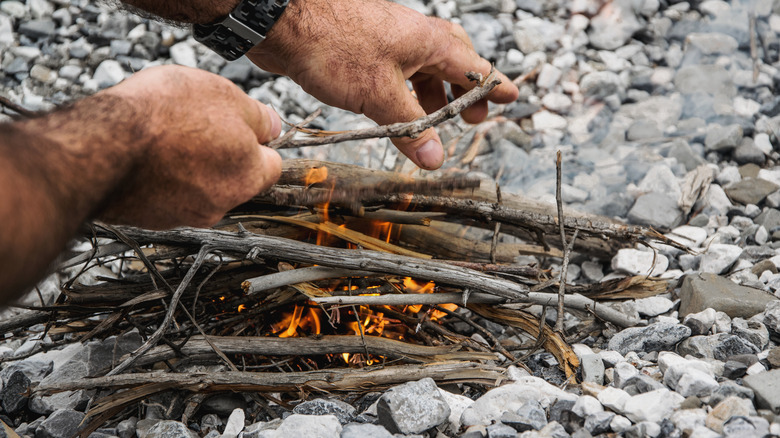Cold-weather camping is not for everyone. While there are plenty of ways to make it comfortable — and plenty of amazing sights to see during colder months — the low temperatures can make it risky. If the electricity in your RV stops working or you are tent camping, staying warm is key. However, starting a campfire for warmth or cooking is not always easy.
As most people know, fire needs oxygen, heat, and fuel. The last of these components can be anything combustible, like a wooden log. Fire is the chemical reaction from these elements. However, common household materials are highly flammable, meaning they ignite more easily than something combustible. Alcohol is among these highly flammable materials. Anyone who has unknowingly had a cut on their hands before using hand sanitizer will definitely find out due to the stinging feeling from the alcohol in the hand sanitizer. This means that hand sanitizer is flammable, but not all of them can help you start a fire in a pinch.
Separate the alcohol from the hand sanitizer before burning

To catch fire, hand sanitizer needs to have an existing flame. Hand sanitizers with a higher percentage of alcohol will burn better than others, and they usually have a blend of ethanol and isopropyl (rubbing) alcohol. Additionally, you will need to separate the extra ingredients, especially if you are using gel sanitizer. By adding salt to the sanitizer, you can filter the alcohol out with a piece of cloth or another porous material.
The overarching problem with using any sort of liquid for a fire is that the alcohol will quickly burn up. This means that you must keep other materials like tinder on hand to keep the fire ablaze. Another possible challenge is that alcohol loses its strength and evaporates if not held tightly in a container. If you are creating a fire with alcohol indoors, be sure to have some ventilation as the fumes can become toxic. Given these precautions, hand sanitizer as a fire starter is best reserved for emergencies only.

